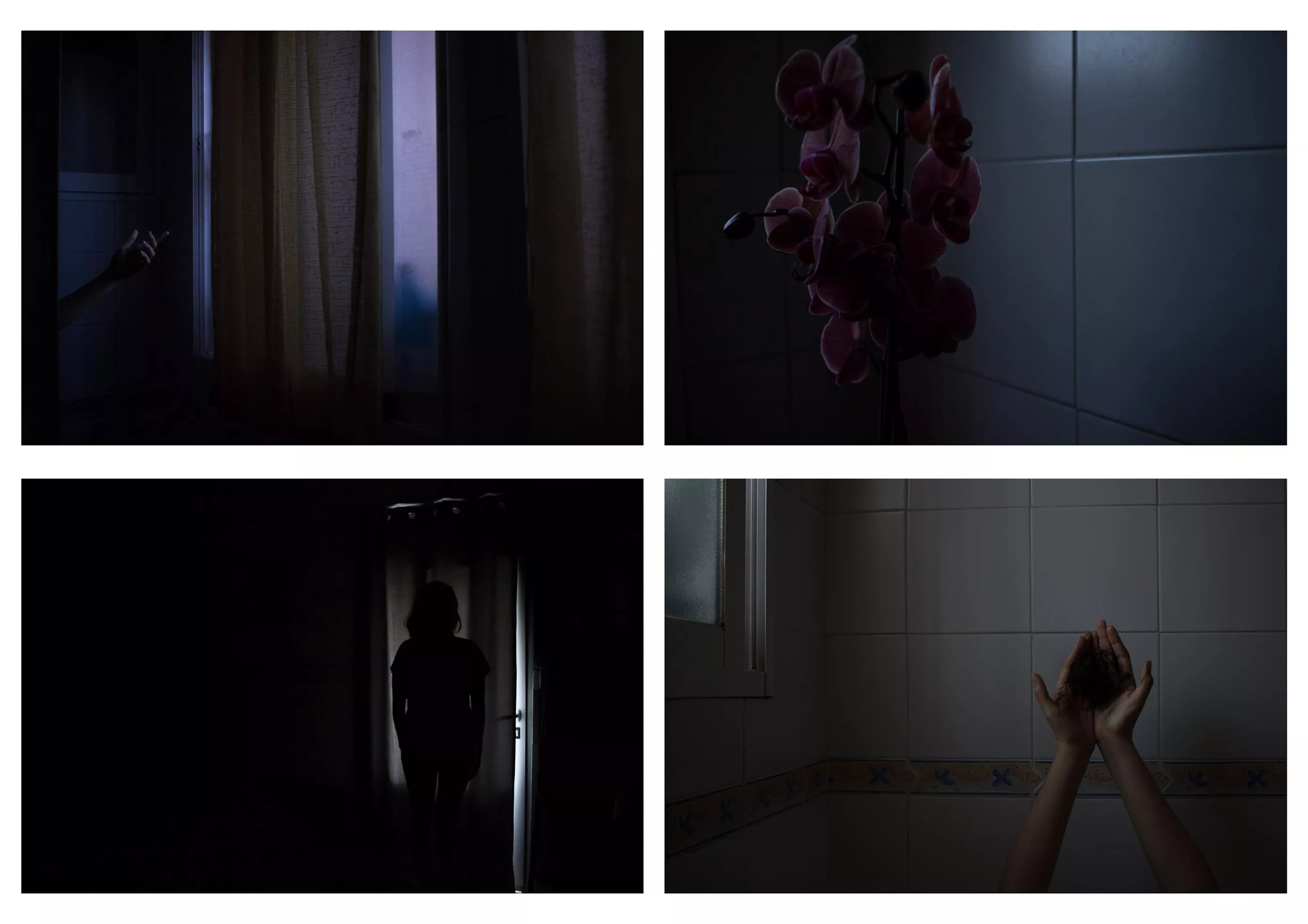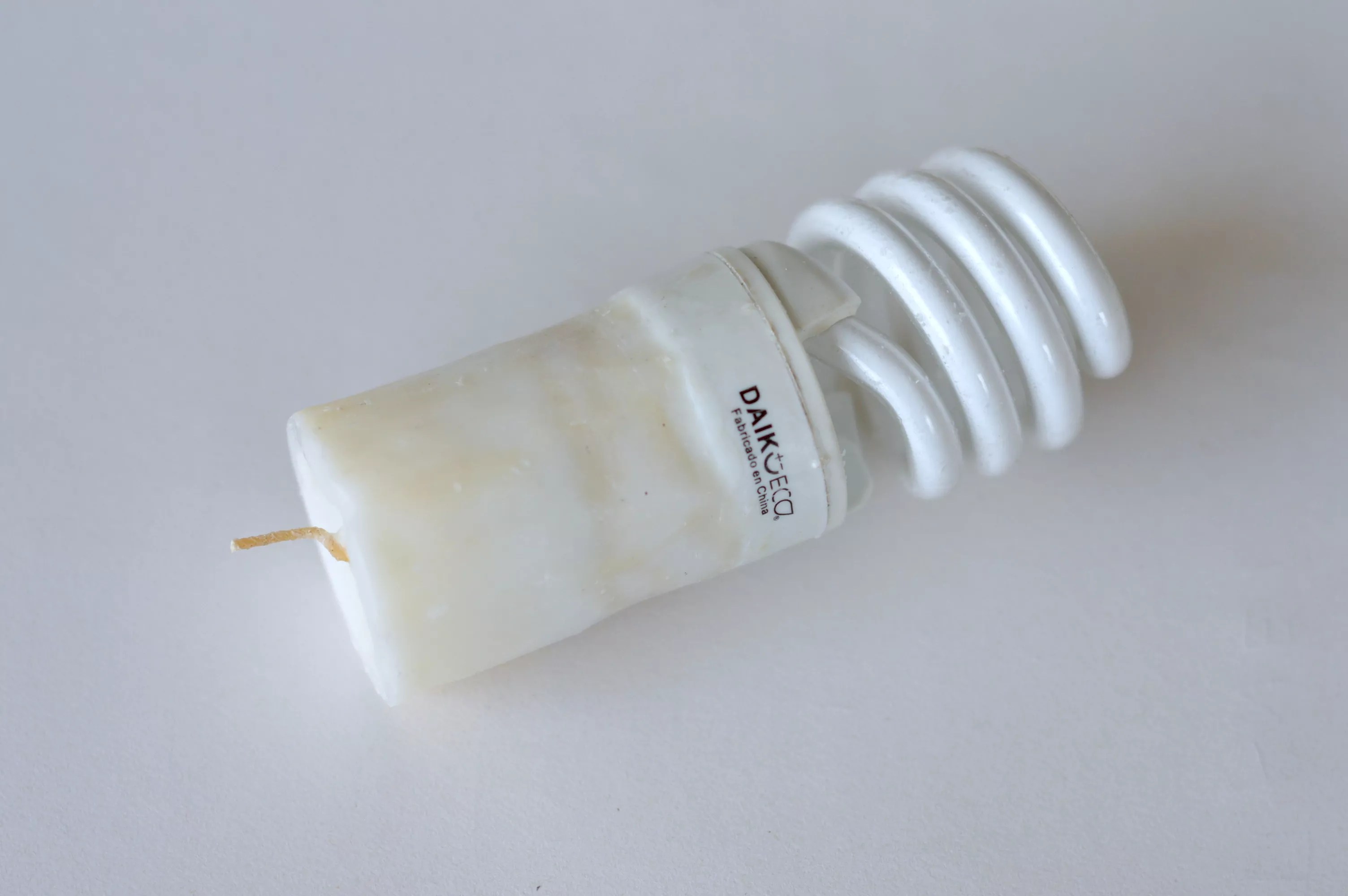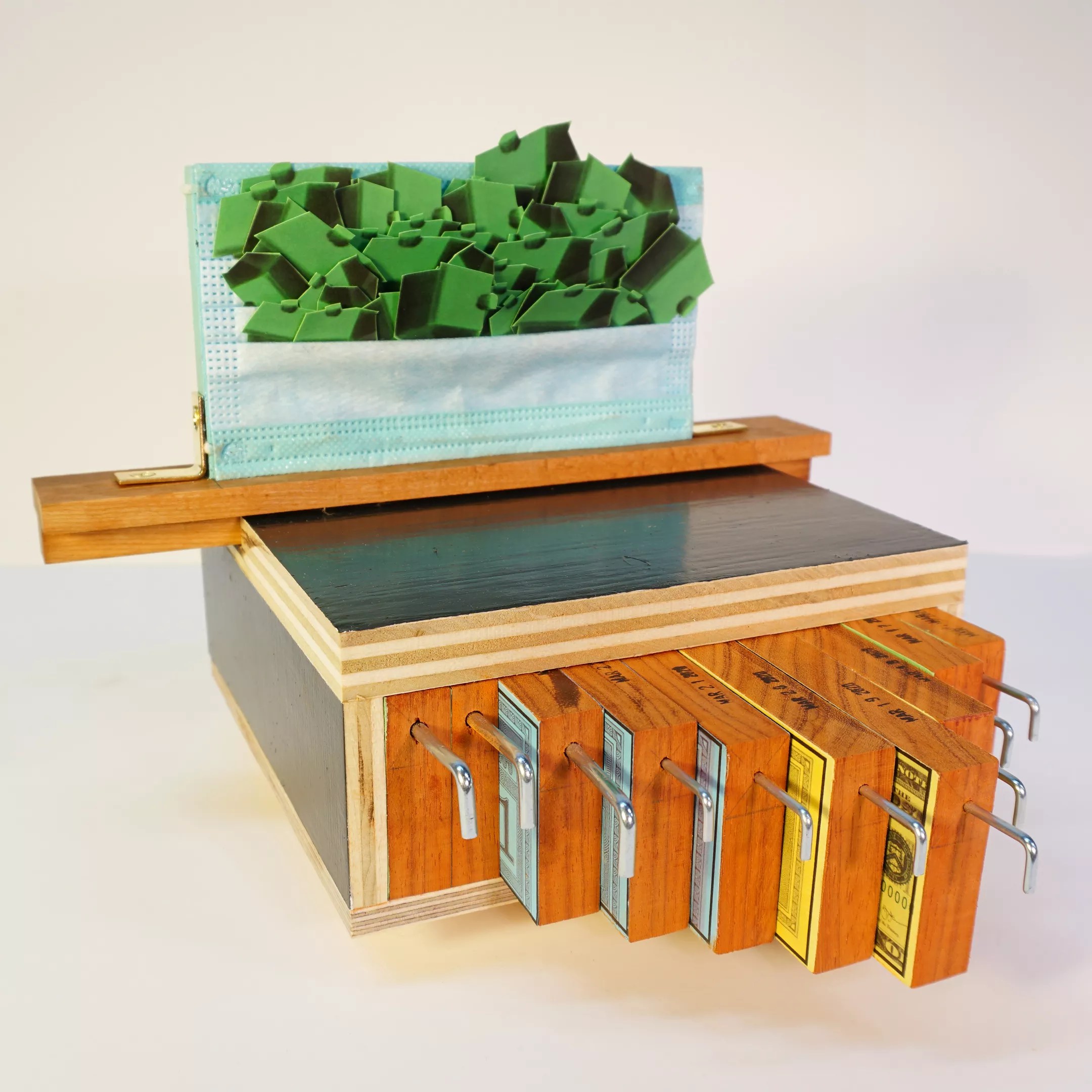
Photos by Paulina Donis

Audio By Carbonatix
When Miami-based artist Johann C. Muñoz thought of creating an exhibit to engage with the impact of the COVID-19 pandemic, he knew these unprecedented times called for an unprecedented approach.
“I knew that I didn’t want artists to be in their studios within their respective practices making stuff that they could’ve done on their own,” Muñoz tells New Times. “I wanted to establish this meaningful exchange because I really believe that that’s where the power of art lives.”
That meant more than merely curating a virtual collection of original work. Most important for Muñoz was that the artists should be in communication and collaboration with one another, even from afar. In the resulting exhibit, a_part: A Quarantine Collaboration, which is still in progress, they engage in precisely that. Like a game of telephone where a message changes as it passes from one person to the next, each artist’s submission must build on or draw from the one that preceded it.
“I knew that by adding this prompt, people had to respond and completely change the dynamic in which they made work,” Muñoz elaborates. “All of a sudden, they had to react; they had to connect and truly have a conversation with somebody else.”
Miami, make your New Year’s Resolution Count!
We’re $15,500 away from our End-of-Year campaign goal, with just a few days left! We’re ready to deliver — but we need the resources to do it right. If Miami New Times matters to you, please contribute today to help us expand our current events coverage when it’s needed most.
The parameters were simple: Each artist had 36 hours to complete their piece, and it was up to them to choose what element they wanted to take from the work of the person who went before them. They also prepared a photo of their work and a brief explanation of what they’d done, which they sent to the next person in line.
“With each one of their submissions, they were kind of sending a diary entry, and they ended up talking about their artistic methodologies. Some of them went as far as talking about their current mental states,” Muñoz says.
He’s collecting all of the writings in archive he hopes to share as part of the virtual exhibit when it’s complete.
So far the project spans fourteen cities on four continents, including submissions from North America, South America, Europe, and Africa; plans are underway to include several artists from Hong Kong.
In addition to the name of the artist and title of their work, each piece is labeled with the date and time of submission and the city it came from. A scroll through the entries reveals a wide variety of mediums, from drawings and paintings to musical compositions to photography.

The first work in the exhibit, Alejandro Valencia’s Reciprocal Object (for W. Benjamin)
Photo by Alejandro Valencia
To find his artists, Muñoz drew from the global network he’d built while working as a professional artist in Miami for more than a decade. He also researched creatives on social media and explored graduate shows from various BFA programs, many of which were transpiring online owing to the coronavirus.
“Miami has allowed us to receive so many perspectives from everywhere in the world, so I’ve established really great connections with artists from any country imaginable just by being here,” he says. “But the project also pushed me to look for perspectives and artists that I don’t know personally.”
Initially, Muñoz randomized the list of participants. But he tweaked the order based on pairings he thought would be interesting. For instance, he placed Susan Banks, a ceramicist based in Miami and Key Largo, directly after Paulina Rizzo, a ceramicist in Oaxaca, Mexico, to see how they would converse with one another using the same medium within different contexts.
He asked his friend and colleague, Alejandro Valencia, to create the work that would put the project into motion. Drawing from his experience with power outages and lack of access to materials during the pandemic in Manizales, Colombia, Valencia submitted Reciprocal Object (for W. Benjamin), which fuses a light bulb with a candle.
“I thought it was beautiful because that’s really what the project is about – reciprocity,” Muñoz says. “It’s just this beautiful synergy between these two objects that emit light, and then the idea of light as a metaphor for hope and for lighting the way forward.”
As a viewer, the thread that leads from one work to the next might appear clear: You might see a color, shape, or material move from one piece to another, showing up in a slightly altered way. In one instance, the color red runs through a chain of three Miami artists. In response to a drawing by Hugguette Henao, singer/songwriter Alexa Lash wrote a song called Red Bird – the drawing contains small red markings that she saw as birds. From there, Carol Todaro created Red to Blue (Song of the Storm), a mixed-media piece in shades of blue with hints of red undertones.
Other times, it’s less obvious what one artist gleaned from their predecessor: It might be a theme or a sensation that inspired the ensuing piece. In response to Thomas Bils’ submission, an oil painting on wood featuring a dark figure in a snowy landscape, Paulina Donis took a series of shadowy photographs in her home in Cuenca, Spain.

Part of Valeria Guill
Photo by Valeria Guill
“Her piece is this beautiful, more-personal glimpse into her quarantine experience,” Muñoz says. “I think she used Thomas’ idea of the walking figure in the darkness, and then made her cinematic photographic series out of that. It becomes kind of this exposition of the anxiety caused by this uncertainty.”
The anxiety and uncertainty of these times come up in the work of many artists. Sabetty Heyaime, working in New York, used her artwork to respond to what was going on in her environment as it became the epicenter of the coronavirus. Her piece, Soon, is deceptively simple: an inflated yellow balloon wrapped in thread taped to the wall.
“The idea is that she filled this balloon with her breath – she infused it with life – but over time it’s just going to deflate, and the binds around it are also going to come undone – so it’s this beautiful relationship of tension and also letting go,” Muñoz says.
With the exchange still underway, Muñoz expects the exhibit to be complete by mid-June, and to feature more than 45 entries in total.
He says the experience has taught him a lot about the power of collaboration and communication.
“I’ve learned that authentic connections are possible, even when mediated through these digital platforms. People really have stories to tell, and at times all they need is the platform to be able to share,” he says.
The project is also a testament to the power of art itself.
“We’re constantly being challenged by: Is this economically sound? Can you make a living out of art? – all of these factors that push and pull and make you doubt sometimes what you’re doing,” Muñoz says. “If anything, this project has reassured me that art really is the place where great ideas are exchanged. It’s how we teach people to really see, and therefore how we show the world how to transform itself.”
“a_part: A Quarantine Collaboration.” View the exhibit at johanncmunoz.com.